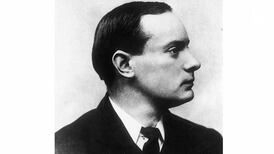In a quiet moment the other day I read through an ancient directory of Dublin that lists off the luminaries and traders of 1795, and a lot more besides. The volume in question was produced by one William Wilson, a printer who could be found in those distant days at 7 Dame Street. This was a gift many years ago and, endlessly fascinating, it is one that keeps on giving.
My edition of Wilson’s directory is attached to a companion volume with an exquisite title: “The Gentleman’s and Citizen’s Almanack compiled by Samuel Watson for the Year of our Lord, 1795, Being third after Leap Year and the thirty-fifth year of George III.”
Watson, a bookseller of 71 Grafton Street, was not a fellow to skimp on detail. His title page promises everything from the “marriages and deaths of the princes of Europe” to the names of the “judges and several other people in positions of high trust and office in Ireland, both civil and military”.
In many ways these documents are forerunners of the Institute of Public Administration directory of our own times, the annual tome of names and numbers that can now be accessed electronically via desktop or phone app.
So it was that Wilson and Watson captured something of their own moment more than 200 years ago, showing who was who around town. For some at least, Dublin was an advancing city of privilege, prosperity and architectural grandeur. Given where the power really was at the time, the lists of gentry are exhaustive. No earl goes unmentioned, no viscount, peeress, baron nor baronet. And clergy too: bishops, deans, archdeacons, vicars general.
No mention is made of the political stirrings underground that unleashed rebellion in 1798
Yet these documents allude also to hardship and struggle. Wilson tells of the Orphan House for girls, established in 1791 for “receiving, maintaining, educating and apprenticing or bringing up as useful servants, destitute female children who have lost both father and mother, and are between five and ten years of age when admitted”. The house for little orphan boys opened two years later. They must have been lonely souls.
The Irish parliament was still sitting in 1795, exercising relative independence from Britain, albeit without Catholic participation. In Watson, the MPs for Dublin city include the Rt Hon Henry Grattan, father of the parliament and the man who gave it his name. His town home was at Kildare Street, his country residence at Tinnahinch, Co Wicklow. Still, these are directories not newspapers. No mention is made of the political stirrings underground that unleashed rebellion in 1798. In its wake came the 1800 act of union with Britain, which scrapped the College Green assembly. This was Grattan’s lament for lost independence: “I sat by its cradle, I followed its hearse.”
There are other names in this milieu that echo through centuries. The list of Kildare MPs include Lord Edward Fitzgerald, already gripped then by the radical fervour that would bring him into a leading role in the United Irishmen and death in 1798. Another notable United Irish leader, Oliver Bond of Bridge Street, is named among the merchants as a wholesale woollen-draper.
A group 'promoting the practice of virtue and religion' met weekly at Capel Street, horrified at the 'baneful progress' of dissipation, immorality and irreligion
Each directory lists Dr Robert Emmet among the licentiates of the King’s and Queen’s College of Physicians. The father of Robert Emmet, he went to the gallows at Thomas Street after leading the rebellion of 1803. Another son, Thomas Addis Emmet, a leading light in the United Irishmen, is listed by Wilson among the barristers. Near Thomas Addis on the same page is John Philpot Curran, lawyer and father of Sarah Curran, the fiancee of Robert Emmet. Fate would bind them all forever, but not just yet.
The impression overall is that this busy place was developing rapidly. There were coroners, hospitals, revenue commissioners for “his Majesty”, lottery commissioners, the corporation for improving the port, trustees of the linen manufacture. The Cork, Limerick and Galway mail coaches “with guards” left Dawson Street at 10pm nightly and 9pm on Sunday. A group “promoting the practice of virtue and religion” met weekly at Capel Street, horrified at the “baneful progress” of dissipation, immorality and irreligion.
There were companies for the Grand Canal and Royal Canal, insurers of lives, ships and merchandise, and money men for loans. Watson lists off the bankers of Dublin, Cork, Waterford, Limerick, Clonmel and Belfast, “their hours from 10 in the morn till 2 in the afternoon”. One was Sir William Gleadowe Newcomen of Castle Street, after who a bridge was named at the North Strand in Dublin. It is there still, like much of the city these people left behind.














